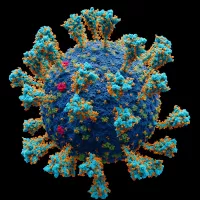The Australian Grand Prix is an annual motor racing event currently contracted to host Formula One until 2035. Since its inception in 1928 at Phillip Island, it has been held at 23 different venues. It became part of the Formula One World Championship in 1985. Since 1996, the race has been staged at the Albert Park Circuit in Melbourne, except for 2020 and 2021 when it was cancelled because of the COVID-19 pandemic. Prior to 1996, the event was held in Adelaide.
1928: Inaugural Australian Grand Prix at Phillip Island
In 1928, the Australian Grand Prix began as the 100 Miles Road Race at the Phillip Island road circuit, and was won by Arthur Waite.
1929: First race called Australian Grand Prix
In 1929, races at Phillip Island were first called the Australian Grand Prix. Bugattis began dominating, taking four consecutive wins.
1932: Bugatti Dominance
In 1932, Bugatti continued its dominance at the Australian Grand Prix held at Phillip Island, marking their fourth consecutive win.
1935: Last Phillip Island Race
In 1935, the last Australian Grand Prix race was held at Phillip Island before the title lapsed for three years.
1936: Centennial South Australian Grand Prix
In 1936, an Australian Grand Prix style event was held at Victor Harbor, South Australia, to celebrate the South Australian centennial.
1938: Grand Opening at Mount Panorama
In 1938, the Australian Grand Prix title was revived for the grand opening of Mount Panorama. Peter Whitehead won the race.
1939: Race at Lobethal Circuit
In 1939, one more race was held at the Lobethal Circuit before World War II halted racing in the country.
1947: First Post-War Grand Prix at Mount Panorama
In 1947, Mount Panorama hosted the first post-war Australian Grand Prix, initiating a rotational system between the Australian States.
1952: Doug Whiteford's Victory
In 1952, Doug Whiteford won the Australian Grand Prix at Mount Panorama in a Talbot-Lago Formula One car.
1954: Lex Davison's First Victory
In 1954, Lex Davison achieved the first of his four victories in the Australian Grand Prix, driving a Jaguar-engined Formula 2 HWM.
1955: Brabham's first AGP win
In 1955, Jack Brabham secured his first of three Australian Grand Prix wins at the Port Wakefield Circuit driving a rear-engine Cooper T40, marking the first time a rear-engine car won the Grand Prix.
1956: Grand Prix returns to Albert Park
In 1956, the Australian Grand Prix returned to Albert Park, hosting European teams like Maserati. Stirling Moss won the race.
1962: BRM Grand Prix team toured Australia
In 1962, the BRM Grand Prix team toured Australia during the summer, planting the seed for what would become the Tasman Series.
1963: Start of the Golden Age
In 1963, the top European Formula One teams began racing in Australia and New Zealand during the European winters, marking the start of a golden age for racing in the region.
1966: Graham Hill wins the Grand Prix
In 1966, Graham Hill won the Australian Grand Prix.
1966: Return to Power
In 1966, the popularity of the Tasman Formula was directly responsible for the return to power in Formula One.
1967: Lotus-Cosworth appearance
In 1967, the Lotus-Cosworth appeared, challenging Brabham's dominance in Formula One with a lightweight car proven in the Tasman series.
1968: Cosworth involvement begins
In 1968, Cosworth began designing and building engines for the Australian Grand Prix, funded by Ford.
1968: Clark's last major victory
In 1968, Jim Clark secured his last major victory at the Australian Grand Prix in Sandown Raceway.
1969: Amon's victory
In 1969, Chris Amon won the final Tasman Formula race, leading teammate Derek Bell to a Ferrari 1-2 finish at Lakeside Raceway.
1969: End of the golden age
In 1969, the top European Formula One teams concluded racing in Australia and New Zealand during the European winters, ending the golden age for racing in the region.
1970: Jack Brabham's Last Win
In 1994, Nigel Mansell became the oldest Grand Prix winner since Jack Brabham in 1970.
1976: Separation from Tasman Series
In 1976, the Australian and New Zealand legs of the Tasman Series split, and the Australian Grand Prix became a stand-alone race. Also, John Goss became the only driver to win both the Grand Prix and the Bathurst 1000.
1977: Warwick Brown wins the race
In 1977, Warwick Brown won the Australian Grand Prix.
1980: Alan Jones driving a Lola-Hart
In 1980, Alan Jones drove a Lola-Hart. Jones, who started 19th, stalled at the start but fought his way to sixth by lap 20 before retiring later in the lap with electrical failure.
1980: Formula One back as the Grand Prix Formula
In 1980, entrepreneur Bob Jane brought Formula One back as the Grand Prix Formula. The event was held at Calder Park Raceway, with Alan Jones winning.
1982: Prost wins Australian Drivers' Championship
In 1982, Alain Prost won the Australian Drivers' Championship, driving a Formula Pacific Ralt RT4.
1982: Prost's Victory
In 1982, Alain Prost won the Australian Grand Prix, which was otherwise dominated by Roberto Moreno.
1982: Keke Rosberg's championship year
In 1982, Keke Rosberg was the champion.
1984: World Sportscar Championship round
In 1984, Sandown was able to attract a round of the World Sportscar Championship to its upgraded track.
1985: Senna on pole and Rosberg's victory
In 1985, Ayrton Senna secured pole position, while Keke Rosberg won the race at the Adelaide Street Circuit, marking the first Australian Grand Prix as part of the Formula One World Championship. Niki Lauda retired after crashing.
1985: Australian Grand Prix joins FIA Formula One World Championship
In 1985, the Australian Grand Prix became a round of the FIA Formula One World Championship, held on the street circuit in Adelaide.
1985: Formula One inclusion
In 1985, the Australian Grand Prix became part of the Formula One World Championship.
1986: Prost wins the championship
In 1986, Alain Prost won the Australian Grand Prix and the Drivers' Championship after Nigel Mansell's dramatic tyre failure. Rosberg had a puncture as well, causing damage to his McLaren in his last Formula One race.
1986: Prost wins in Adelaide
In 1986, Alain Prost won the Australian Grand Prix in Adelaide in Formula One.
1987: Berger wins after Senna's disqualification
In 1987, Gerhard Berger won the Australian Grand Prix after Ayrton Senna was disqualified for technical irregularities in his last race for Lotus.
1988: Prost wins in Adelaide again
In 1988, Alain Prost won the Australian Grand Prix in Adelaide again in Formula One.
1988: Alain Prost Wins the 1988 Australian Grand Prix
In 1988, Alain Prost won the Australian Grand Prix, marking his seventh victory of the season. The race was significant as the last Grand Prix of the turbo era and highlighted McLaren-Honda's dominance with all three podium positions secured by Honda turbo engines. The 1988 race marked McLaren-Honda's 15th win and 15th pole in 16 races.
1989: Controversy and Rain at the 1989 Australian Grand Prix
In 1989, the Australian Grand Prix was heavily impacted by rain, leading to concerns from drivers like Prost about the dangerous conditions. This occurred shortly after a controversial incident at the Japanese Grand Prix involving Prost and Senna. Prost withdrew after one lap, while Senna crashed later in the race, handing the win to Boutsen and the championship to Prost. The 1989 event saw a delayed start and discussions on whether to proceed due to the very wet conditions.
1990: Senna Wins the 1990 Driver's Championship
The 1990 Australian Grand Prix, the 500th World Championship Grand Prix, followed a controversial incident at Suzuka where Senna crashed into Prost, securing his second Driver's Championship. During the 1990 race, Senna crashed due to gearbox issues after leading for 61 laps, leading to a close finish between Piquet and Mansell, with Piquet ultimately winning. There was also pre-race controversy with Prost refusing to participate in photo shoots with Senna.
1991: Senna Wins Shortened 1991 Australian Grand Prix
In 1991, the Australian Grand Prix was held in extremely wet conditions and was stopped after only 14 laps, with Ayrton Senna declared the winner. The 1991 race secured McLaren's fourth consecutive Constructors' Championship. Nelson Piquet retired from Grand Prix racing after finishing fifth. The race lasted only 52 kilometers and 24 minutes, making it the shortest Formula One race at the time.
1992: Berger Wins the 1992 Australian Grand Prix
In 1992, Senna crashed into Mansell at the last corner during the Australian Grand Prix. Gerhard Berger, Senna's teammate, won the 1992 race.
December 1993: Decision to Move the Race to Melbourne
In December 1993, it was announced that the Australian Grand Prix would be moved to Melbourne from Adelaide. This decision came shortly after the South Australian election, with the race set to be held at a rebuilt Albert Park Circuit.
1993: Senna's Final Victory at the 1993 Australian Grand Prix
In 1993, Ayrton Senna achieved his 41st and final Formula One victory at the Australian Grand Prix, also marking his last race for McLaren. Alain Prost, also in his final Formula One race, finished second. Senna and Prost embraced on the podium, and the 1993 event saw the announcement that the Australian Grand Prix would move to Melbourne in 1996.
1993: Cosworth involvement ends
In 1993, Cosworth stopped designing and building engines for the Australian Grand Prix.
1994: Schumacher Wins the 1994 Driver's Championship
The 1994 Australian Grand Prix saw Damon Hill and Michael Schumacher, battling for the championship, collide on lap 36, resulting in both retiring and Schumacher winning the title. Nigel Mansell won the race, becoming the oldest Grand Prix winner since 1970. The 1994 race saw Mansell return to Formula One in place of the late Senna.
1995: Häkkinen's near-fatal crash during qualifying in 1995
In 1995, Mika Häkkinen suffered a tire failure during qualifying at the Australian Grand Prix, resulting in a severe crash. He was critically injured but saved by an emergency procedure performed by Sid Watkins. The 1995 incident led to increased safety measures in Formula One.
1995: Highest attendance at 1995 Adelaide race
In 1995, the Adelaide race had 520,000 attendees.
1995: Last Formula One race in Adelaide
In 1995, the last Formula One race was held on the Adelaide Street Circuit, known for being challenging and popular.
1995: Adelaide hosts the Australian Grand Prix
The Australian Grand Prix at Adelaide in 1985–1995 was always the last event in the Formula One calendar
1995: Last Adelaide race attendance
The last Adelaide race in 1995 had a higher attendance than any race in Melbourne since the move.
1996: Melbourne Hosts First Grand Prix
In 1996, Albert Park in Melbourne became the new home of the Australian Grand Prix. 401,000 people turned out for the four days leading up to and including the first race in 1996, which remains a record for the event. Melbourne won the F1 Constructors' Association Award for the best organised Grand Prix of the year.
1996: Melbourne to Host the Australian Grand Prix
In 1996, Melbourne began hosting the Australian Grand Prix, taking over from Adelaide. Melbourne's bid for the 1996 Summer Olympics was thought to be a factor in its motivation to secure the Grand Prix. The Australian Grand Prix, since 1996, has usually been the first event or held early in the Formula One season.
1996: Häkkinen returns and Hill Wins at Adelaide
In 1996, Mika Häkkinen returned to Formula One after recovering from his crash in 1995. Damon Hill won the final F1 race at Adelaide, with many of his rivals retiring. Hill finished two laps ahead of the second-place finisher in the 1996 event.
1996: Brundle's Crash and Hill's Victory at the 1996 Australian Grand Prix
In 1996, during the first lap of the first Australian Grand Prix held in Melbourne, Martin Brundle experienced a dramatic crash, which gained widespread coverage. Damon Hill won the race.
1996: Move to Albert Park
In 1996, the Australian Grand Prix moved to the Albert Park Circuit in Melbourne, becoming its permanent home, with the exceptions of 2020 and 2021.
1996: Inaugural Australian Grand Prix
In 1996, the inaugural Australian Grand Prix took place, there were no significant track changes until 2022.
1997: Coulthard Breaks McLaren's Winless Streak in 1997
In 1997, David Coulthard won the Australian Grand Prix, ending McLaren's 50-race winless streak.
1997: Ilmor involvement begins
In 1997, Ilmor started building engines for the Australian Grand Prix.
1997: Jacques Villeneuve's race debut
In 1997, World Champion Jacques Villeneuve debuted in Melbourne's first year.
1997: Melbourne Wins Second F1 Constructors' Association Award
Melbourne won the F1 Constructors' Association Award for the best organised Grand Prix of the year for the second time in 1997.
1999: Irvine Takes Maiden Victory at the 1999 Australian Grand Prix
In 1999, Eddie Irvine secured his maiden victory at the Australian Grand Prix after both McLarens retired. The 1999 win marked Ferrari's first Grand Prix victory in Melbourne.
2000: Sydney Hosts the Summer Olympics
Melbourne's unsuccessful bid for the 1996 Summer Olympics, and the subsequently successful bid by northern rival city Sydney to host the 2000 Summer Olympics, was a driving force behind Melbourne's motivation to wrest the Australian Grand Prix away from Adelaide.
2001: Alonso and Räikkönen's debut
In 2001, both Fernando Alonso and Kimi Räikkönen made their Formula One debut.
2001: Marshal Fatality at the 2001 Australian Grand Prix
In 2001, the Australian Grand Prix was won by Michael Schumacher but marked by the tragic death of volunteer marshal Graham Beveridge, who was struck by a tyre after an accident involving Ralf Schumacher and Jacques Villeneuve.
2002: Mark Webber's debut
In 2002, Mark Webber made his debut.
2002: Spectacular accident at Turn One
In 2002, the start of the race featured a major accident at Turn One involving Barrichello and Ralf Schumacher, resulting in 11 cars being eliminated. Michael Schumacher won the race, but Mark Webber's fifth-place finish on his F1 debut in a Minardi was a highlight. Webber's achievement in 2002 included recovering from a pit stop issue and fending off Mika Salo.
2003: Coulthard wins in variable conditions
In 2003, Coulthard won the Australian Grand Prix for McLaren, in a race held in variable conditions.
2003: Ilmor involvement ends
In 2003, Ilmor stopped building engines for the Australian Grand Prix.
2004: Schumacher dominates and breaks lap record
In 2004, Michael Schumacher dominated the Australian Grand Prix, breaking the Albert Park lap record during Friday practice and winning the race.
2005: Fisichella wins after storm during Saturday qualifying
In 2005, Giancarlo Fisichella won the Australian Grand Prix for Renault after a storm during Saturday qualifying reshaped the grid. Barrichello and Alonso joined Fisichella on the podium, overcoming their starting positions of 11th and 13th.
2005: Cost-benefit analysis reveals economic loss
In 2005, a cost-benefit analysis revealed a net economic loss for Victoria, with the estimated costs of the event exceeding the benefits.
2005: Webber drives F1 car over Sydney Harbour Bridge
In 2005, as part of the 10th-anniversary celebrations at Albert Park, Webber drove his Williams F1 car over the Sydney Harbour Bridge. A parade of F1 machinery and Supercars was held in Melbourne.
2005: Reference point for attendance
The 2005 Australian Grand Prix held the largest attendance until attendance numbers improved in 2010.
2006: Alonso wins in accident-marred race
In 2006, Alonso won the Australian Grand Prix, a race marked by several accidents and four safety car periods.
2006: Melbourne 2006 Commonwealth Games
The race organisers and the government claimed that the economic benefits to the state, although unquantifiable, outweighed the costs, and highlighted that the park's public amenities have been greatly improved from the World War II vintage facilities previously located at Albert Park; the Melbourne Sports and Aquatic Centre (scene of many Melbourne 2006 Commonwealth Games events) being the centre piece and best known of the revitalised facilities.
2007: Auditor-general's report shows costs exceed benefits
A 2007 auditor-general's report found that the costs to host the event exceeded the benefits by $6.7 million.
2007: Räikkönen wins on Ferrari debut, Hamilton on podium
In 2007, Kimi Räikkönen won the Australian Grand Prix in his first race for Ferrari, and Lewis Hamilton finished third on his F1 debut.
2008: Hamilton wins race with multiple safety car periods
In 2008, Hamilton won the Australian Grand Prix, which was notable for having three safety car periods and only six finishers.
2009: Button wins for debutant team Brawn GP
In 2009, Jenson Button won the Australian Grand Prix for debutant team Brawn GP, following Honda's withdrawal. The race ended behind the safety car after a crash. Brawn GP also achieved a 1-2 finish. Trulli was penalized and Hamilton disqualified.
2009: Drop in crowds
In 2009, Victorian Premier John Brumby cited higher unemployment and a public transport strike as reasons for a slight drop in Australian Grand Prix attendance.
2010: Button wins after Vettel retires
In 2010, Button won the Australian Grand Prix after Vettel, who started on pole, retired due to mechanical issues. Button gambled on an early change to slick tires.
2010: Alonso's grand slam at the Singapore Grand Prix
In 2010, Fernando Alonso achieved a grand slam at the Singapore Grand Prix.
2010: Attendance numbers improved
In 2010, the Australian Grand Prix attendance numbers improved to an estimated 305,000, the largest since the 2005 race.
2011: International exposure and tourism spending
According to a 2011 EY report commissioned by Tourism Victoria, hosting the Grand Prix generated between $32.04 million and $39.34 million for Victoria's Gross State Product.
2011: Vettel wins, Petrov secures first Russian podium
In 2011, Vettel won the Australian Grand Prix, with Hamilton second and Vitaly Petrov third, marking the first podium for a Russian F1 driver.
2012: Report estimates net economic loss
A 2012 report estimated that the Grand Prix resulted in a net economic loss to Victoria of between $48.8m and $66.7m.
2012: Button wins for third time in four years
In 2012, Button won the Australian Grand Prix for the third time in four years.
2013: Räikkönen wins for Lotus
In 2013, Räikkönen won the Australian Grand Prix for Lotus, with Alonso and Vettel following behind.
2014: Rosberg wins as Ricciardo is disqualified
In 2014, Rosberg won the Australian Grand Prix for Mercedes. Magnussen and Button finished second and third after Ricciardo was disqualified post-race due to illegal fuel flow.
2014: Debate over economic impact of Grand Prix
In 2014, the Victorian government claimed the Australian Grand Prix had an annual economic impact of $32 million to $39 million, while opponents argued it cost taxpayers over $50 million to host.
2014: Grand Prix runs at a loss
The 2014 Australian Grand Prix ran at a $59.97 million loss.
2015: Hamilton wins from Rosberg
In 2015, Hamilton won the Australian Grand Prix from his teammate Rosberg, with Vettel finishing third.
2015: Grand Prix runs at a loss
The 2015 Australian Grand Prix ran at a $61.7 million loss.
2016: Grand Prix runs at a loss
The 2016 Australian Grand Prix ran at a $61 million loss.
2017: Grand Prix runs at a loss
The 2017 Australian Grand Prix ran at a $57.1 million loss.
2018: Supercars Challenge becomes championship event
In 2018, the Supercars Challenge at the Australian Grand Prix was contested for championship points for the first time, and was known as the Melbourne 400.
2019: Australian Grand Prix cost taxpayers $60.2 million
In 2019, the Australian Grand Prix cost Victorian taxpayers $60.2 million. It generated $55 million in revenue but cost $115.2 million to stage.
2020: Cancellation due to COVID-19
In 2020, the Australian Grand Prix was cancelled due to the COVID-19 pandemic.
2020: Grand Prix cancelled due to coronavirus
In 2020, the Australian Grand Prix was planned despite the coronavirus epidemic, but after a McLaren mechanic and a photographer tested positive, the event was cancelled just hours before the first practice session.
2021: The 1991 Australian Grand Prix Record is Broken in 2021
In 2021, the 1991 Australian Grand Prix record of being the shortest ever Formula One race was surpassed by the 2021 Belgian Grand Prix, which lasted three laps, but was classified after only one official lap.
2021: Cancellation due to COVID-19
In 2021, the Australian Grand Prix was cancelled due to the COVID-19 pandemic.
June 2022: Contract extended to 2035
In June 2022, Melbourne's contract to host the Australian Grand Prix was extended to 2035, ensuring it would be one of the first three races of the season, and host at least five season-opening races between 2023 and 2035.
December 2022: Further two-year extension
In December 2022, a further two-year extension was signed, ensuring the Australian Grand Prix will remain in Melbourne until 2037.
2022: Economic impact assessment
According to a 2022 economic impact assessment by Ernst & Young, the Australian Grand Prix generated an estimated $92 million of direct spending in the Victorian economy.
2022: Alain Prost's Unique Achievement
As of the 2022 edition, Alain Prost remains the only driver to win the Australian Grand Prix in both World Championship and domestic formats.
2022: Security Concerns Over Crowd Figures
In 2022, the Australian Grand Prix Corporation stated that crowd figures are sensitive from a security and safety perspective, and disclosing them has the potential to affect the security of Victoria.
2022: Australian Grand Prix cost taxpayers $78.1 million
In 2022, the Australian Grand Prix cost Victorian taxpayers $78.1 million. It generated $75.1 million in revenue but cost $153.2 million to stage.
2022: Grand Prix returns with circuit revisions
In 2022, the Australian Grand Prix returned after a two-year absence due to COVID-19. The circuit underwent significant revisions, and Charles Leclerc achieved his first career grand slam. The event set a new attendance record with 419,114 attendees.
August 2023: Freedom-of-information ruling
In August 2023, the Office of the Victorian Information Commissioner ruled that disclosure of crowd figures was important for "transparency and accountability".
2023: Economic Impact Assessment
According to a 2023 Economic Impact Assessment, the Australian Grand Prix contributed an estimated $268 million to the Victorian economy.
2023: Formula 2 and Formula 3 races added to schedule
From 2023, Formula 2 and Formula 3 races will be part of the Australian Grand Prix weekend schedule.
2023: Record attendance and multiple red flags
In 2023, the Australian Grand Prix broke the attendance record with 444,631 attendees. The race, won by Max Verstappen, featured three red flags, a first in Formula One history.
2023: Australian Grand Prix cost taxpayers $100.6 million
In 2023, the Australian Grand Prix cost Victorian taxpayers $100.6 million. It generated $96.9 million in revenue but cost $197.6 million to stage.
2023: High Attendance at 2023 British Grand Prix
In 2023, the British Grand Prix drew 480,000 attendees.
September 2024: AGPC fights order to reveal crowd counting method
In September 2024, the Australian Grand Prix Corporation went to the Victorian Civil and Administrative Tribunal to fight an order to reveal how it counts crowds for the Australian Grand Prix.
2024: Sainz wins race with record attendance
In 2024, Carlos Sainz Jr. won the Australian Grand Prix, which set a new attendance record of 452,055 spectators, making it the most attended sporting event ever in Melbourne.
2024: Peak spectator attendance in Melbourne
In 2024, spectator attendance for the Australian Grand Prix in Melbourne peaked at 452,055.
2025: Contract expiration date
In 2025, the contract to host the Australian Grand Prix was due to expire.
2035: Contract End
In 2035, the Formula One contract to host the Australian Grand Prix is due to end.
2035: Contract extended to 2035
In 2035, the Melbourne's contract to host the Australian Grand Prix will be extended until this year.
2037: Race will remain in Melbourne until 2037
In 2037, the race will remain in Melbourne until this year, after a further two-year extension.
Mentioned in this timeline

Coronaviruses are a family of RNA viruses affecting mammals and...
New Zealand is an island country located in the southwestern...

Michael Schumacher is a retired German Formula One racing driver...

Max Verstappen is a highly successful Dutch-Belgian Formula One driver...

Lewis Hamilton is a British Formula One racing driver currently...
Australia officially the Commonwealth of Australia encompasses the Australian mainland...
Trending

Jermaine Demetrius Burton is an American professional football wide receiver and return specialist currently playing for the Cincinnati Bengals of...

7 months ago Paolo Banchero's NBA Journey: Overcoming Injury, Praising Teammates, and Hope for the Future

6 months ago Julia Fox Ditches Beauty Trend, Net Worth Soars: An 'It Girl' in 2025

1 month ago Jayden Reed Injury Update: Packers WR Setback and Recovery Timeline

14 days ago Scott Bessent Predicts Oil Price Drop Contingent on Venezuelan Events; Gas Prices Impacted.
4 days ago David Corenswet Visits Alma Mater; Brainiac Shortlist Includes Bang, Smith, and Rockwell
Popular
Matt and Ross Duffer known as the Duffer Brothers are...
Aftyn Alyssa Behn is an American politician currently serving as...

Candace Owens is an American conservative political commentator and author...

XXXTentacion born Jahseh Dwayne Ricardo Onfroy was a controversial yet...

Ilhan Omar is an American politician currently serving as the...

Lane Kiffin is an American football coach currently serving as...